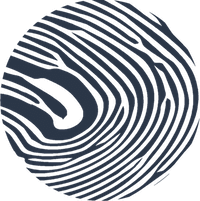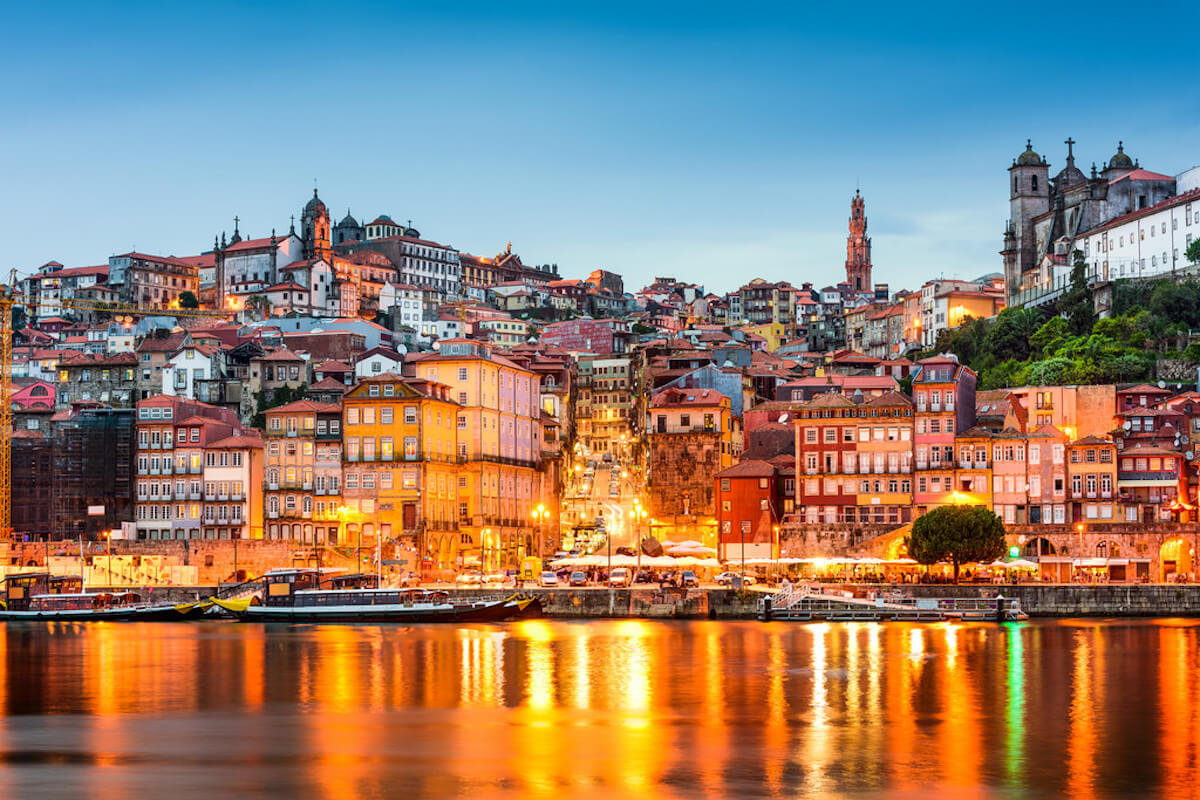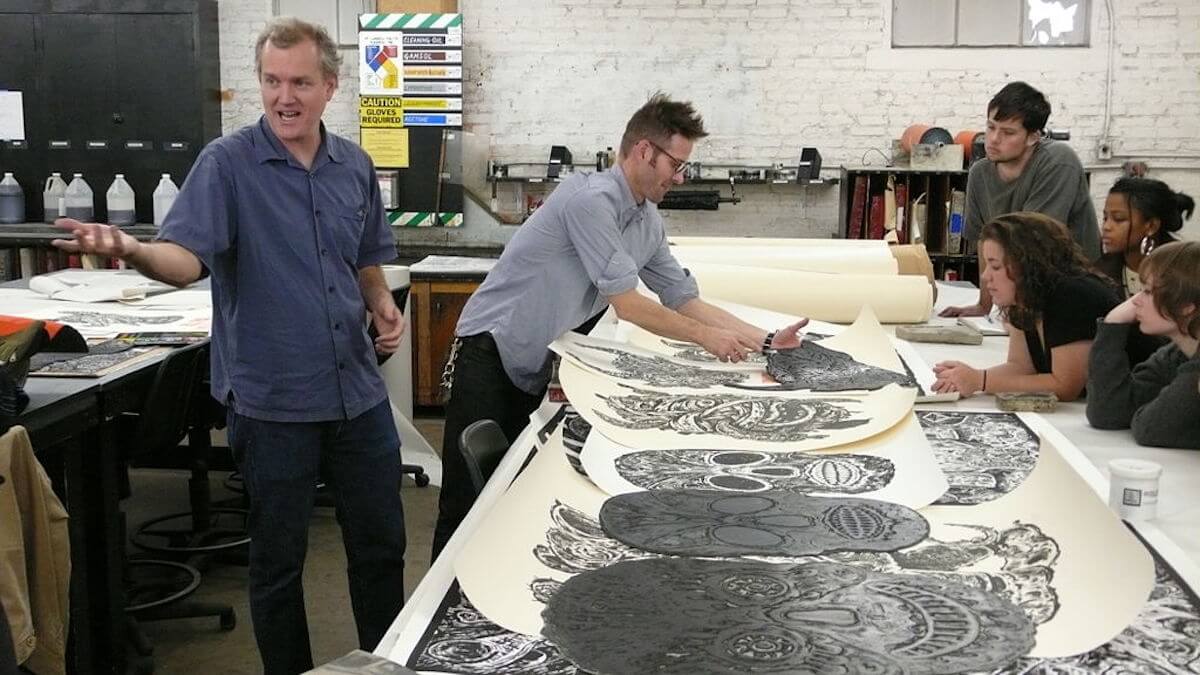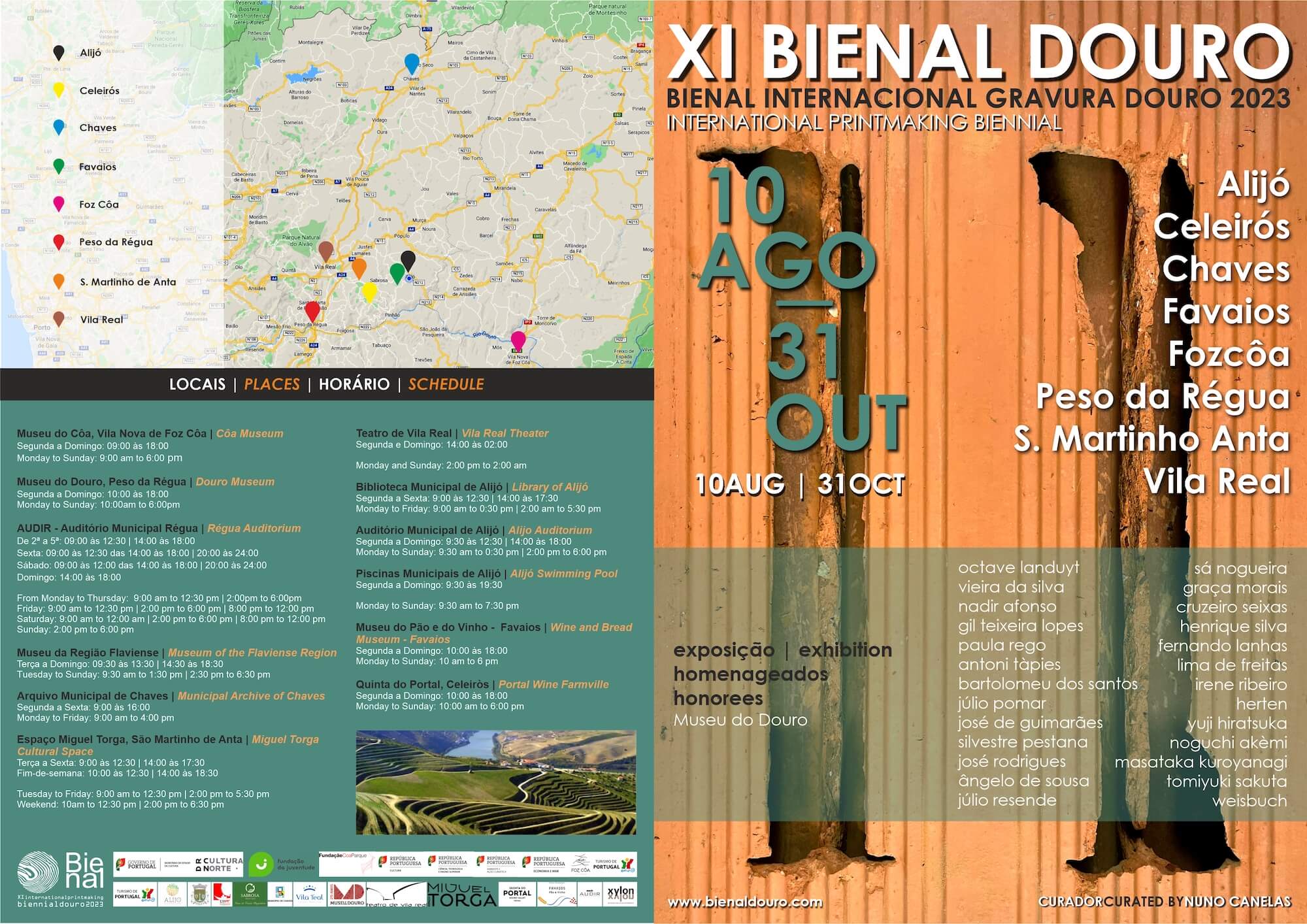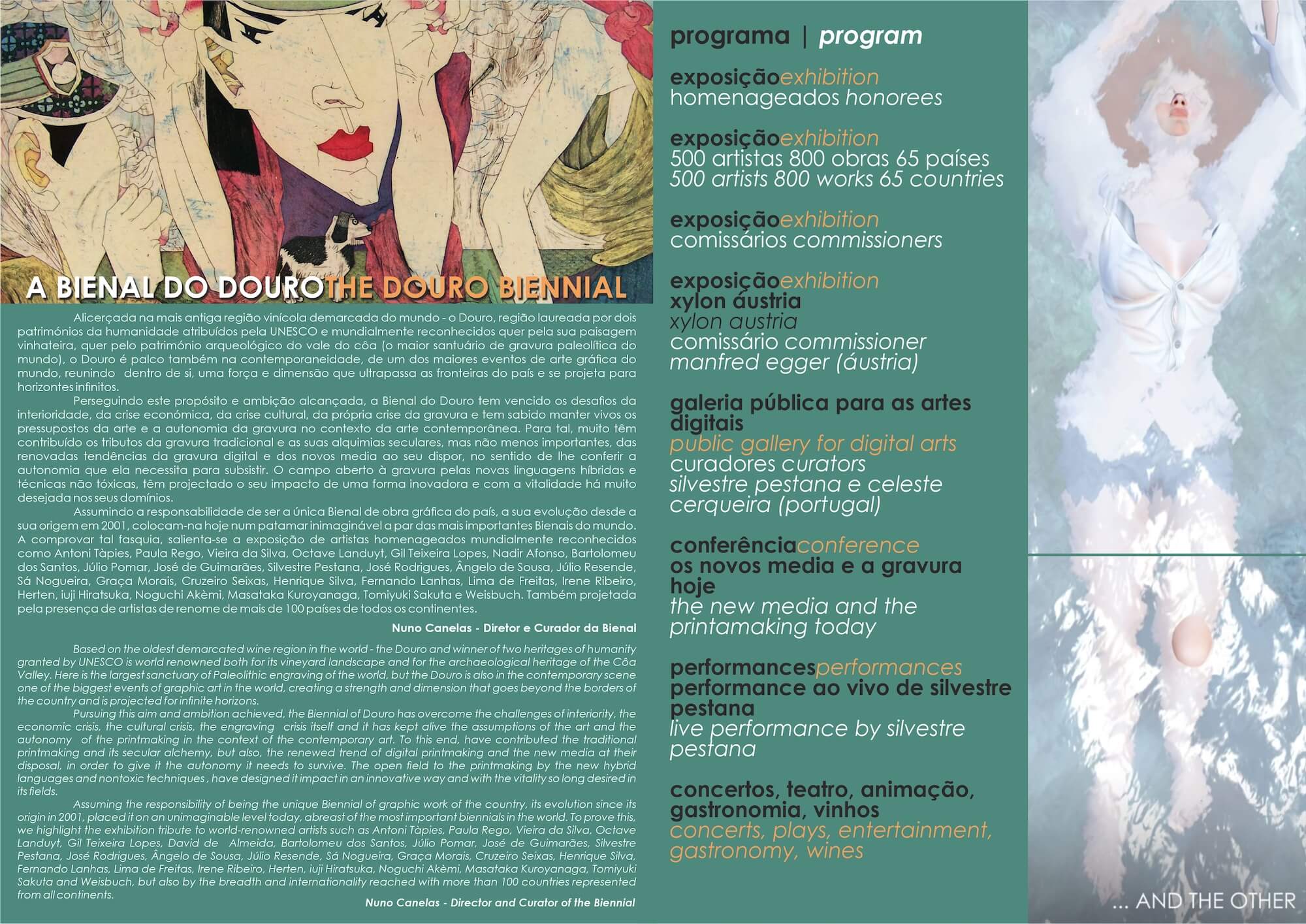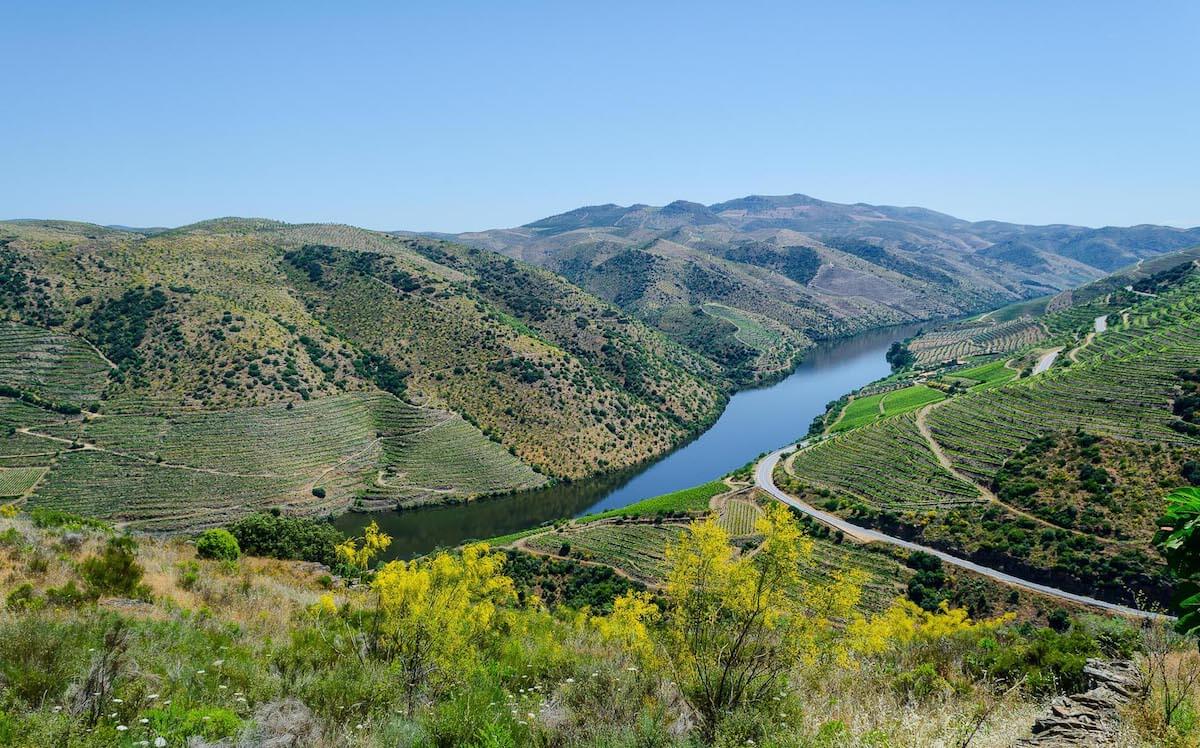THE PRINTMAKING TODAY
Challenges, dialogues and mediation strategies
Probably everyone has already made a printmaking. Who has not left his footprints on the wet sand of a beach, played with stamps or scratched a crayon on a sheet with a coin below? Or even drew with graphite the texture of a leaf to the paper? Or even printed a digital photo of his baby son?
These and several other examples that can be performed by any person everyday (except maybe in the last), helps to demonstrate how the printmaking is present in our daily lives, even without perception that we are producing it or using it. It can be a conventional printmaking, in which we only transfer the texture of a surface to the paper, or a digital one in which we print a photographic picture to the paper, in both situations; we can say that we are making prints.
Printing, seems to be something easy and a commonplace as making an impression requires gestures so simple and so basic materials such as clay, the hand, pigments, moulds, cuts, corrosions, and so on. The word print covers so many practices and results that we can discover many printing processes in ancient times, such as the prehistoric engravings, the dinosaurs that left impressions in clay or just any fossil.
In fact, engraving is not restricted to think on paper, press, matrix, but we should have a wider
thought, for example, think of a contact that leads to the possibility of another way, a gesture that responds to another and this answer modifies and opens up, as if it were a thought, thinking engraving, as thinking drawing.
The thought cannot be described as thinking of engraving, but as engraving of thought, having the same plasticity, fluency and consistency of the movements in the engraving process.
As you can see, the complexity of the engraving processes, on printing items, contact, matrix, material, picture, are not only of retinal, technical, material or of materializing order, it leaves us in suspense about any rushed conclusion on this matter, by giving preference to a superficial look on what the print raises, going no deeper and understanding the physical and timeless horizons in its scope.
The wing of a dragonfly can be the fossilization most distant in time, but can also be connected with an overlay of contemporary features. An image can be exposed in a contradictory time in the same surface.
The different levels of our thoughts are also overlapping, as in the idea of anachronism that we work in the print sheets.
Looking at art as a thought engraving or as an engraving-thought and not wants to guide it to a purpose is an attempt to understand it through its plans. The print consists of several experiences: passages, stratums, artist proofs, unique pieces, color proofs, transfers, thoughts, feelings, impregnations, excavation, cracks, absences, shapes, cut-outs, distances, subtle, intense, overwhelming, velvety, sharp and a great multitude of many other contacts. The experience in printing becomes an experience, which creates an experience of tactile sensations and thoughts. What happens between the space of a surface and the matrix is a sort of entry of forces in the form of etching or engraving-thought. The perception of these forms produces new forces again. Thus, there must be a way of coming up the forms, a film, a plan or a skin where the energy of the pictures movement can flow.
All this complexity that the print (so simple in concept) causes expanded its action, becoming therefore an open work. It is in this way of thinking that new media can add and help to maintain the printing autonomy in the context of contemporary art. Despite the disapproval of some and the consent of others, the constructive dialogue or its total absence, the art of printmaking does not stop and continues its fearless and serene ride, dragging all their sponsored institutions. In fact, if the relationship between printmaking and photography, has motivated anger and discontent of many, today, in the XXI century, the hybridism of printmaking with other media intensified and caused new seizures and frictions undoubtedly even greater than before. The result from this were new types of printmaking, designs coming from offset printing, the urban printing, the multimedia installations, the digital computer compositions and printed on ordinary printers, the use of programs and software such as Photoshop or Corel Draw.
By combining today with these new digital media, consequently resulting new visual experiences with renewed potential for printmaking. Its matrix which was once made of metal, wood or stone, now acquires insubstantial characteristics of digital representation and the pixel of the image replaces the point, the line and the shadow printed by the physical action of the printer, or by alchemical means of acids and varnishes, integrating virtual images in computerized programs, leaving the paper, out of the process. The result of these media symbioses can take the form of installations, digital images, web art, among others.
This new contemporary reality promoted in printmaking the passage of the graphic visual image, printed in paper to a virtual visual image that exists primarily on computer monitors. This transition to the virtual is a bit drastic, because it transits from the weight of the ink and paper’s atom to the weight of virtual images,
i.e. to the virtual of bits and pixels, from the material to the energy and this is, in fact, a drastic change.
The printmaking artist today, in a sense, is faced with the virtual that is presented as an apparently rectangular window (the computer screen), as a new version of the pictorial space, but that is not, since the processing elements, the handling of the plastic parts, the dimensions that are involved go far beyond the two dimensions of the white page of the paper and the individual using these new media is faced with truly unexpected situations. This “lightness” in creative expression, without material, gives to the experimentalist creation a registry key to its strong contemporary times, reminding automatically the spaces of the “empty” and approaching its operational in between, the concepts of “Open Work” Umberto Eco, or the paradigmatic concepts of the contemporary art theorized by Rosalind Krauss who tells us of that conquest of the art of the empty space and the lack of work.
This new digital picture invades our everyday culture, expressing its avant-garde in museums and galleries of contemporary art, in the urban areas in the form of public art and in biennials and dedicated to it, being alive and in constant transformation, as it was always in its history. It shows up as “open work” again, not by closing its confrontations in itself and always allowing the artist or the spectator to innovate
and to improve new possibilities in its dialectic. This operative revolution, in which the printmaking survives, conquering new spaces for contemporary issue, is contrary to those who annihilate it and call it, unfairly, as a minor art. Maybe they do not realize its crucial contribution in the history of art and of mankind, so they see it just like that craft art at the service of the press, not understanding or knowing the steps it has taken toward its autonomy.
It appears then that the world of printmaking has always highlighted the changing of the graphic printing process throughout the history of art, sometimes nearer the traditional prints, sometimes more distant and in deep rupture. As shown, by analyzing the most important print works and its evolution to the present day, it outlined a path towards a move that expands its boundaries, not in a subversive way, but consistent with its need of autonomy and livelihoods while living art. The big challenge for the printmaking, either traditional or hybrid, is therefore in keeping alive the historical conditions of its genesis, without renouncing to the changes dictated by the evolution of the history of art, self-valuing with these contemporary contributions.
Only then, it can claim an important role similar to that of the other languages.
The artists and the institutions do not have to follow an imposed code. People change, the world changes, the worldview changes and the art adapts to the changes and gives its contribution to improving the world and the society, the man inside and also outside. This enhancement of sensitivity is an open project, which does not need to follow a specific code, nor is so dependant on artistic languages or technical issues.
Today in art we face new processes of industrial and electronics production of massive international movement and, consequently, new kinds of reception and appropriation. To the extent that the growing domination of man over those endless media, operates a change in man himself and in the perception of what he produces. The key is, then in the process of selecting and interpreting the information.
The Events and the art biennials can provide this key, the interface between the scholarly and the everyday knowledge. This key can materialize through clearer information to different audiences on aspects related to the messages of art exhibited, the fundamentals of the chosen topics, the controversies and political, social and cultural relevancies raised for their actions in society, by the use of new audiovisual technologies which penetrate more easily in public less alert and eager for more interactive stimuli.
The dialogue with the art goes beyond the experimental exercise, becoming an aesthetic pleasure in the life of man, in the way that if someone can be educated through art, because it can make us better people and show that there are many worlds beyond our navel. In this sense, it is essential for greater public information, finding ways to match their understanding, not answering questions with more questions, conduct public meetings with information of the artists explain and justify the reason for the choices and mainly, to return to the public the opportunity to rediscover the wonder, the perception that comes from the contemplation of an object that reconciled the perfection of the form with the perfection of the idea.
Today we need the exercise of admiration, of the empathy. Something very different from the noise and the banality of everyday life, the easy and disposable solutions of the “shopping centre” culture.
Finally, invite local artists to mingle with artists from abroad to a mutual understanding, have a concern with the social and socializing issue not only for the organizers but also for art producers: the artists and their interaction with the public.
All these considerations are attempts to understand our world so fragmented and the role of the art biennials should be in my point of view, precisely in this line of the overall decoding of art and the complexity of the contemporary societies. Without presenting a conclusion too objective, a task almost impossible in terms of art, without finding a formula to solve the issues raised, it seems to me that it is necessary a reflection about printmaking in an expanded way, pointing out several perspectives to the livelihood and the autonomy of the printmaking as a traditional technique, but also about the advantages of it combines with other languages. It is precisely in the balancing on this line of confrontation and through the “juggling” of creative artists, that the printmaking can find its circus and project itself without ambiguity or inferiority in the context of the contemporary art.
The Curator, Nuno Canelas
Curriculum Vitae - Nuno Canelas
NUNO CANELAS (Portugal)
Born in Alijó, on 19th January 1968.
Founder, Curator and Director of the International Printmaking Biennial of Douro and Global Print
(Portugal) from the beginning, 2001 to 2023.
21 solo exhibitions and participated in over two hundred collective exhibitions in Portugal and
abroad.
TRAINING: 2007-2010-Master in Contemporary Art by the Portuguese Catholic University - School of the Arts -Porto;
2002-2004-Degree in Fine Arts - Painting by (ESAP - Artistic Superior School) - Porto;
1997-1998-Professional Formation for Arts Teaching (UTAD University) - Vila Real;
1992-1995-Degree in Drawing by (ESAP - Artistic Superior School) - Porto diogo;
TRAINING ACTIVITIES: 2008-Japanese Printmaking Workshop – Chine-Collé Technique - oriented by Mami Higuchi - 30th Aniv. Twinning of Porto / Nagasaki - Matrix - Porto;
2003-Traditional Japanese Woodcut Workshop - Ukyo-E (Master Hiroshi Maruyama) - Aicart - Porto;
2000-Printing Techniques with the printmaker Irene Ribeiro - Cooperative Árvore - Porto;
1998-Photography Workshop - UTAD Portuguese Institute of Photography - IPJ Vila Real;
CULTURAL PROJECTS: 2019 - 8ª Fif Bilbao 2019 - Festival Internacional de Grabado Y Obra sobre Papel - Convidado - Palacio Euskalduna - BIlbao - Espanha;
2019 – Invited as Curator of the Portuguese representation for the Project “Mirror – Face to Face” – Italy and Portugal. 2 Exhibitions – Douro Museum – Régua (Portugal); Qu.Bi Gallery and UNESCO – Vicenza – Italy;
2018-19 - 1st Dafen International Oil Painting Biennale, Shenzhen - China 2018;
2018 – Invited and Honorary Prize for remarkable contribute in the graphic art in the World - 9th International Triennial Of Graphic Art Bitola - Macedonia, 2018;
2017 - Curator/Commissioner of Portugal representation - DI CARTA/ PAPERMADE – 3rd edition – International Printmaking Biennial - Papermade Art Work Exhibition – Schio – Italia;
2017 – Invited of the 6th Internacional Print Biennial of Guanlan and Forum/Conference - “ What is Printmaking?—Print-related Art” – Guanlan (Shenzhen) – China;
2017 – Invited for the 'Belt and Road International Printmaking Exchange Project' and Forum/Conference – Dunhuang – China and Exhibition - YAC Print Base - Tianjin (Pequim) – China;
2013-2017-Curator/Director of the International Printmaking Exhibition – GLOBAL PRINT;
2001-2016-Curator/Director of the International Printmaking Biennial of Douro and of the Printmaking Centre of Alijó;
2001-2016-general Commissioner and Jury of the International Printmaking Biennial Douro since its beginning;
2013 – Invited for the 17th International Biennial of Cerveira and Individual Exhibition – Gallery Project – V. N. De Cerveira – Portugal;
2008-2010-Various trips for research to several museums in New York (USA), Puerto Rico (USA), the Venice Biennale (Italy), Milan (Italy), Barcelona (Spain) Paris (France), London (England) and ArtBasel (Switzerland), to the Master's dissertation;
2008- Invited artist to a Conference on Print and Contemporary Art - Uri Gallery - San Juan - Puerto Rico;
2006-Commissioner by Portugal of the International Printmaking Biennial of Antwerp - Premium Frans Dille - Museum Plantin-Moretus - Antwerp - Belgium;
2000 - Commissioner of the VII Biennial, 1st International Printmaking Amadora;
1996 - 1998 Vice President of the Foundation House - Museum Mauricio Penha;
1995-2016-Professor of Visual Arts, Graphic Design and 3D Drawing; 1991/1993- Painting pottery Project with the artist Jaime Baptista in Gaia;
SOLO / COLLECTIVE EXHIBITIONS: 21 solo exhibitions and participated in over one hundred collective exhibitions in Portugal and abroad.
